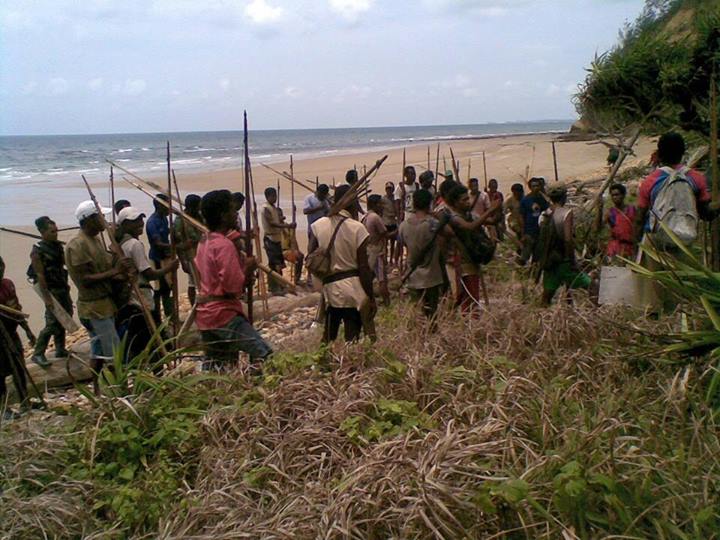 In December 2013, PT Menara Group is meant to start operations in Aru. That’s according to the Menara Group’s work schedule which has become general knowledge amongst government officials in Maluku Province and Aru Regency, especially Maluku’s caretaker governor Saut Situmorang.
In December 2013, PT Menara Group is meant to start operations in Aru. That’s according to the Menara Group’s work schedule which has become general knowledge amongst government officials in Maluku Province and Aru Regency, especially Maluku’s caretaker governor Saut Situmorang. How can that have come about? The officials claim that all the permits are issued according to procedure, there are no problems with the environmental impact assessment, and the people of Aru raise no objections. If there are some people who object, it is only a handful of people, who are not the customary landowners. Can this all be true?
The call to Save Aru has become a global movement. School and university students, academics, researchers, NGO activists, nature lovers, journalists, artists, religious teachers, all sorts of groups from across five continents have echoed the cry to Save Aru. Petitions have taken off, songs have been sung, performances staged, poetry inspired. The fire of resistance continues to grow.
The giant consorsium PT Menara Group plans to develop sugar-cane plantations in the Land of Aru, the land called Jargaria. It has ambitions to take control of around 500 thousand hectares for this purpose. Before planting this vast plantation and building a sugar factory, first of all it would clear-fell the forest, full of top-quality timber such as meranti, linggua, ironwood and so on. This would inevitably be an ecological disaster, as birds of paradise and other wildlife endemic to Aru are cleared from their natural habitat. This is the Menara Group’s plan which is meeting vehement challenges from the Save Aru movement around the world.

